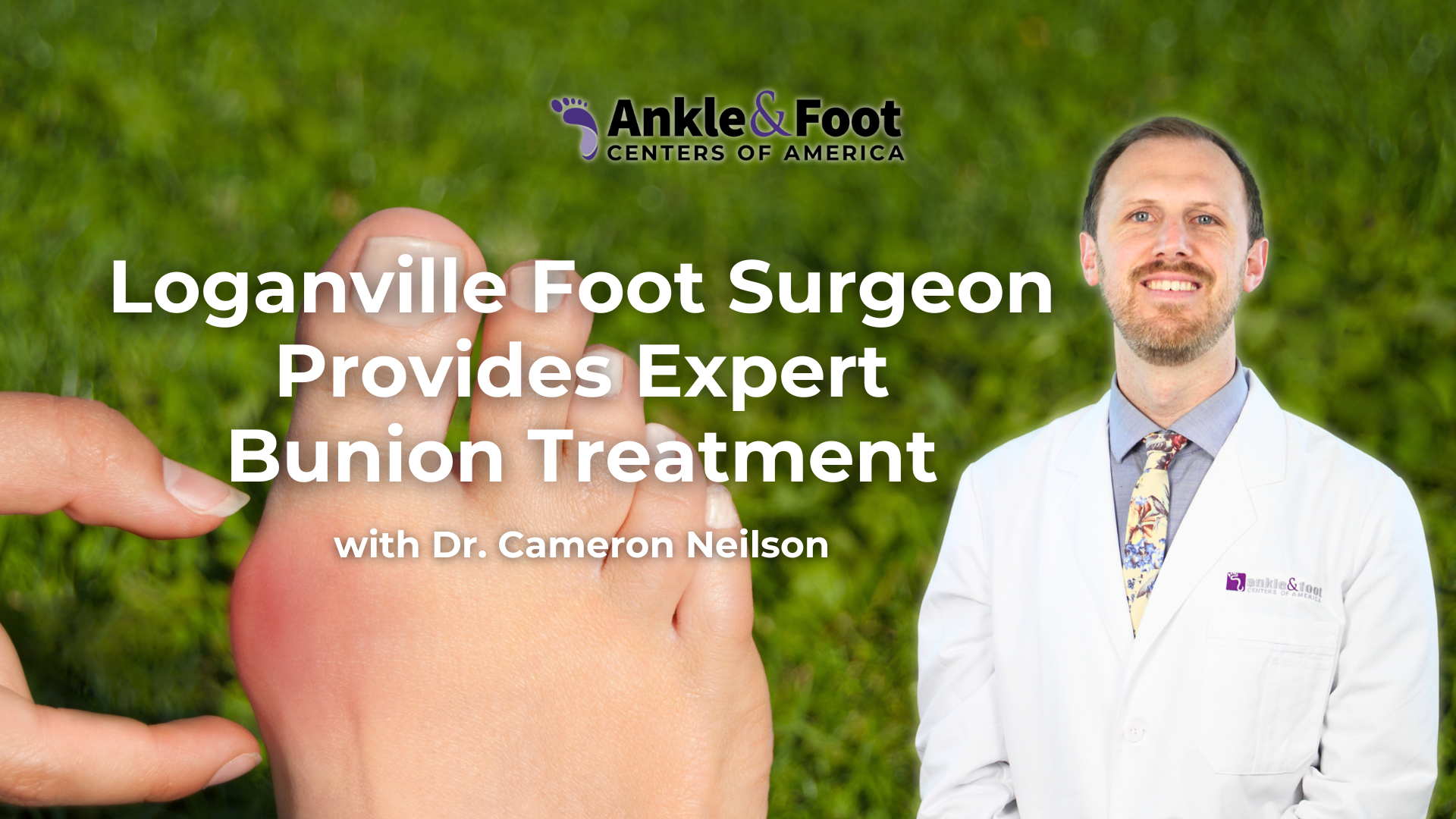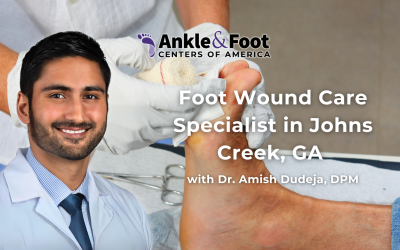Table of Contents
Introduction
Bunions, those painful bony bumps at the base of your big toe, can disrupt your daily life. They make walking and wearing shoes uncomfortable, but relief is possible. This article will explore various treatment options for bunions on feet, including bunion pain treatment through non-surgical and surgical approaches. Discover how you can manage bunion pain and improve your foot health effectively.
Understanding Bunions
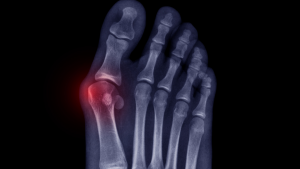 Bunions develop when the big toe pushes against the next toe, causing the joint to stick out. Several factors contribute to the development of bunions:
Bunions develop when the big toe pushes against the next toe, causing the joint to stick out. Several factors contribute to the development of bunions:
- Genetics: Bunions often run in families due to inherited foot structures, making some people more prone to developing them.
- Footwear: Wearing tight, narrow, or high-heeled shoes puts excessive pressure on the toes and joints, causing bunions.
- Foot Structure: Certain foot types, such as flat feet or low arches, can predispose individuals to bunions.
- Medical Conditions: Conditions like arthritis can increase the risk of bunions due to joint inflammation and damage.
Symptoms and Signs of Bunions
- Visible Bump: A noticeable bony bump on the side of the big toe joint.
- Pain and Tenderness: Constant pain or tenderness around the big toe joint, especially when wearing shoes.
- Swelling and Redness: Swelling and redness around the affected area.
- Restricted Movement: Limited movement in the big toe, making it difficult to walk or wear certain types of shoes.
- Corns and Calluses: These may form where the first and second toes overlap due to the misalignment.
Proper diagnosis and early treatment can manage bunions and prevent complications.
Diagnosis of Bunions
Initial Consultation with a Podiatrist
Firstly, the podiatrist will ask about your symptoms, their duration, and factors that affect the pain. They will also consider your family history of foot problems.
Next, the podiatrist will examine your foot, checking the big toe’s alignment and the bunion’s appearance.
Diagnostic Tests and Examinations
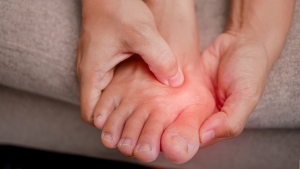 Following the initial consultation, X-rays provide a clear picture of the bone structure and the extent of the deformity.
Following the initial consultation, X-rays provide a clear picture of the bone structure and the extent of the deformity.
Furthermore, advanced imaging techniques like CT scans or MRIs might be used to get a detailed view of the foot’s soft tissues and bones, revealing additional issues like arthritis.
Additionally, observing how you walk (gait analysis) can help identify abnormalities in foot movement that may contribute to bunion formation.
Differential Diagnosis
It is essential to differentiate bunions from arthritis-related deformities, as treatment strategies differ. Similarly, gout can cause sudden, severe pain and swelling in the big toe joint, which can mimic bunions. Likewise, inflammation of the fluid-filled sacs (bursae) around the joints can mimic bunion symptoms.
Non-Surgical Bunion Treatments
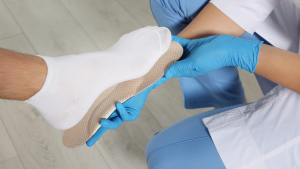 Non-surgical treatments can provide significant relief from bunion pain and slow the progression of the deformity. These conservative measures are often the first line of defense before considering bunion surgery.
Non-surgical treatments can provide significant relief from bunion pain and slow the progression of the deformity. These conservative measures are often the first line of defense before considering bunion surgery.
Custom Orthotics
- Purpose: Custom orthotic devices are designed to support the foot’s structure and redistribute pressure away from the bunion.
- Benefits: They can help alleviate pain, improve foot alignment, and prevent further bunion development.
- Types: Orthotics can be over-the-counter or custom-made by a podiatrist, tailored to your specific foot shape and needs.
Proper Footwear
- Importance: Wearing the right shoes is crucial in managing bunion pain.
- Recommendations: Choose shoes with a wide toe box, low heels, and good arch support. Avoid tight, narrow, or high-heeled shoes.
- Specialized Footwear: Some brands offer shoes specifically designed for people with bunions, providing extra room and cushioning.
Lifestyle Modifications
- Weight Management: Maintaining a healthy weight can reduce pressure on the feet, alleviating bunion pain.
- Activity Modifications: Avoid activities that exacerbate bunion pain, such as prolonged standing or wearing restrictive footwear.

Surgical Bunion Treatments
 When non-surgical treatments no longer provide relief from bunion pain, or if the deformity significantly impacts your daily life, it may be time to consider bunion surgery.
When non-surgical treatments no longer provide relief from bunion pain, or if the deformity significantly impacts your daily life, it may be time to consider bunion surgery.
When Surgery is Necessary
- Persistent Pain: If bunion pain continues despite trying various conservative treatments, surgery might be needed.
- Severe Deformity: A severe misalignment that makes it difficult to wear shoes or perform daily activities often requires surgical correction.
- Impaired Mobility: Limited range of motion in the big toe that affects your walking or daily activities can be a sign that surgery is necessary.
Types of Bunion Surgeries
- Bunionectomy: This procedure involves removing the bony bump from the joint.
- Osteotomy: The foot surgeon cuts and realigns the bones in the big toe to correct the deformity.
- Arthrodesis: In this procedure, the surgeon removes the damaged joint surfaces and fuses the bones together.
- Exostectomy: The foot surgeon removes only the bony outgrowth but does not realign the joint.
- Resection Arthroplasty: This procedure involves removing part of the damaged joint to create a flexible scar joint.
Preoperative Preparation and Considerations
- Medical Evaluation: A thorough medical evaluation, including blood tests and imaging studies, ensures you are fit for surgery.
- Medication Review: Discuss any medications you are taking with your foot surgeon to avoid complications.
- Postoperative Planning: Arrange for help at home and prepare your living space to accommodate limited mobility during recovery.
Post-Surgical Care and Recovery
 Recovering from bunion treatment involves several key steps. Initially, patients can expect some swelling and discomfort, which gradually subsides with proper care. Resting and elevating the foot are crucial during the first few days. As the healing progresses, wearing a protective boot or splint helps support the foot.
Recovering from bunion treatment involves several key steps. Initially, patients can expect some swelling and discomfort, which gradually subsides with proper care. Resting and elevating the foot are crucial during the first few days. As the healing progresses, wearing a protective boot or splint helps support the foot.
Furthermore, physical therapy may be recommended to restore strength and flexibility. Most patients can resume normal activities within six to eight weeks, although full recovery may take several months. Regular follow-up appointments ensure the healing process is on track.
Choosing the right foot surgeon is crucial for a successful outcome. An experienced specialist can recommend the best surgical approach based on the severity of your bunion and overall health.
Conclusion
In conclusion, addressing bunions promptly is essential for maintaining foot health and enhancing your quality of life. Understanding the various treatment options, including bunion surgery, enables you to manage and alleviate bunion pain effectively. If you are experiencing bunion pain or discomfort, do not hesitate to seek professional advice.
Early intervention and proper treatment can prevent further complications and improve your mobility. For expert bunion care, contact Ankle & Foot Centers of America to schedule a consultation.
In summary, your foot health is our priority. Let us help you take the first step towards a pain-free future.

